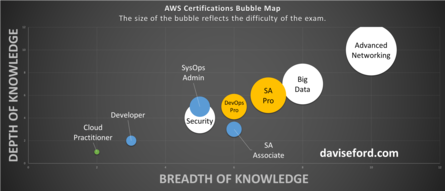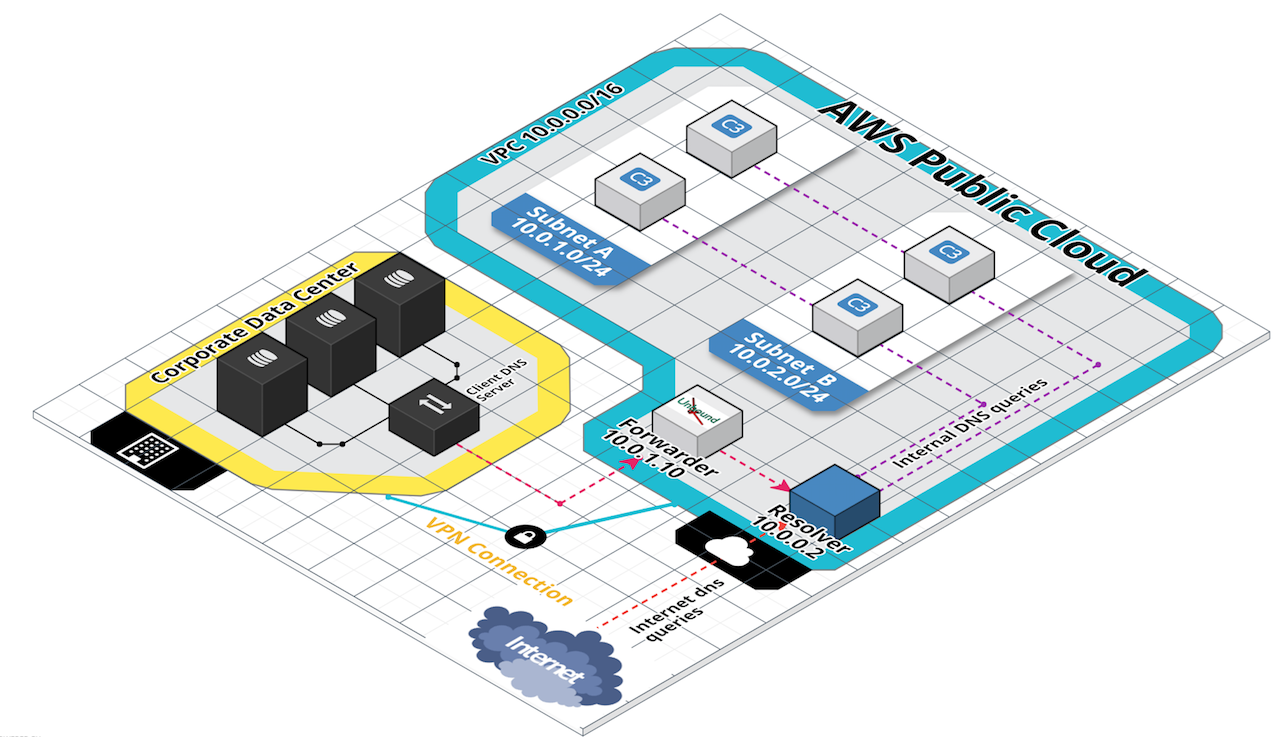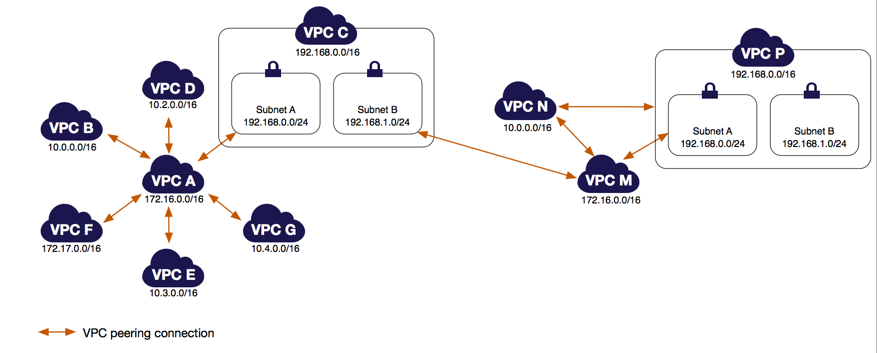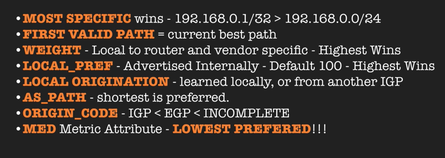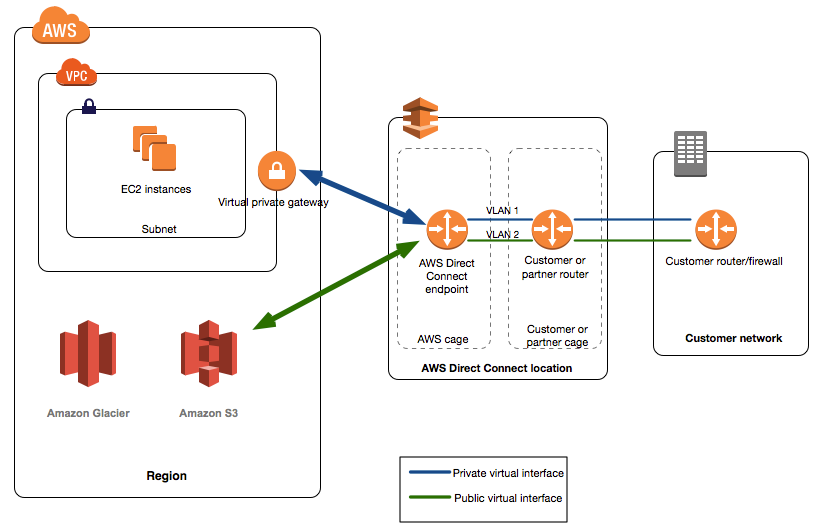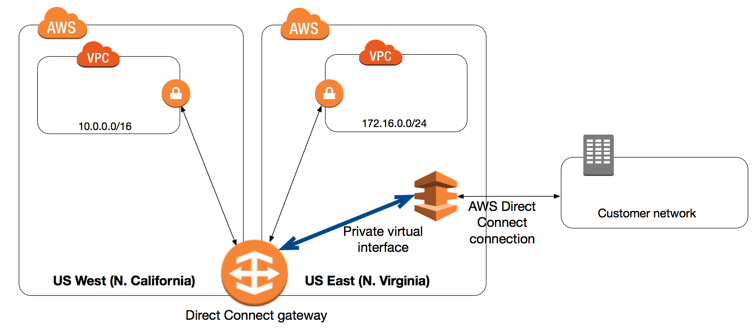AWS Advanced Networking Specialty Exam Tips and Tricks
21 Dec 2018
If you’re planning on taking the AWS Advanced Networking Specialty exam, I’ve compiled a quick list of tips that you may want to remember headed into the exam.
Note: This exam is heavily oriented towards long, detailed, and exhaustive networking questions. You cannot brute-force study your way through this exam. You need a thorough working understanding of Direct Connect and hybrid architecture scenarios and how to solve them.
In my opinion, this exam is by far the hardest out of all AWS certifications, easily surpassing the Big Data Specialty or Solutions Architect Professional certifications for difficulty.
To give you an idea of how hard this exam really is, it’s worth noting that I currently hold all 9 AWS certifications. I had finished 8 certifications before focusing on Advanced Networking, and comfortably passed all 8 attempts. It usually takes me 30-45 minutes to sit for an AWS exam, and I generally feel extremely well-prepared when I sit down for an exam.
The first time I took Advanced Networking - Specialty, I failed with a 60% score. Unlike all of my other certification exams, I knew within the first 10 questions that my chances of passing were slim. I chewed my fingernails to bits as I tried to troubleshoot scenarios that I didn’t even know existed. I walked out of the testing center miserable - I haven’t failed a certification exam since high school (MCSE). I had wanted to get all of the AWS certifications by the end of 2018 - but AWS mandates a two-week pause before you can re-take the exam, so I would be forced to finish my goal in 2019. This stung.
But, so it goes, right? I already had eight AWS exams, and I just needed this last one. I went home and immediately scheduled the exam for two weeks later.
I wrote down all of the things that I didn’t know, and I focused on where I felt the gaps in my knowledge were. I mostly realized that my Direct Connect troubleshooting skills were terrible, and I was not very good at VPC endpoint/interface stuff.
I crammed as hard as I could. Harder than any test I have ever taken. I studied more for this test than I had ever studied in my life. I drew diagrams, flashcards, and mental maps. I had my girlfriend quiz me over and over again on CIDR block properties and subnetting math. It was not a very fun two weeks. I gained weight, avoided social contact, and thought of nothing but passing. I am not used to failing exams, and I was frustrated with myself.
I took the exam for the second time on January 5th, 2019. I passed with a 66% score.
Two weeks of effort and studying had netted me… a 6% boost in score. Luckily, AWS scores on an unpublished curve, so this was sufficient to pass.
I think the exam is so difficult for a few reasons:
- It is rare to have practical experience with Direct Connect and all of the networking concerns that accompany it.
- The core material is simply very, very dense, and requires great knowledge of a great deal of AWS services and how they interact with each other.
- You need strong networking skills in order to troubleshoot tough scenarios.
- The breadth of the exam is extreme. If you haven’t taken the Big Data certification, I doubt you will have any knowledge of some of the products that are used in the exam’s scenario questions. You need very, very broad knowledge of AWS services - on top of that, you need to be familiar with technical implementation details with them.
I found it very useful to use pen and paper to re-draw all of the various routing scenarios that are presented throughout AWS Direct Connect/VPN/VIF documentation. You need to become intimately familiar with the flow of DNS requests for different scenarios.
All that being said, I’ve laid out some of my study notes below. Please enjoy!
Scenarios
- If you need to set Active/Passive mode, use
AS_PATHprepending to make certain routes less attractive than others.- For example, if you had two DX connections and wanted to configure in an Active/Passive configuration, you should prepend the
AS_PATHof whichever DX connection you want to be the Passive.
- For example, if you had two DX connections and wanted to configure in an Active/Passive configuration, you should prepend the
- The only way AWS will prefer a VPN over Direct Connect is if the VPN has a more specific route table entry.
- Read this article in its entirety: VPC Peering Configurations with Specific Routes. You need to understand how to adjust your route tables for various VPC Peering scenarios.
DNS
- Configure your custom DNS servers on EC2 instances in your VPC to route your private DNS queries to the IP address of the Amazon-provided DNS servers for your VPC. This IP address is the IP address at the base of the VPC network range “plus two.” If your VPC CIDR block is
10.0.0.0/16, the IP address of the DNS server is10.0.0.2. (Source) - If you’re using custom DNS servers that are outside of your VPC and you want to use private DNS, you must use custom DNS servers on EC2 instances within your VPC.
- If you have integrated your on-premises network with one or more VPC virtual networks and you want your on-premises network to resolve domain names in private hosted zones, you can create a Simple AD directory. Simple AD provides IP addresses that you can use to submit DNS queries from your on-premises network to your private hosted zone.
- You cannot further subnet a
/28CIDR block. - DNS servers require TCP/UDP port 53 to be open.
- For each public hosted zone that you create, Amazon Route 53 automatically creates a name server (NS) record and a start of authority (SOA) record. Don’t change these records.
BGP
- BGP is typically classified as a path vector protocol.
- A path vector protocol is a network routing protocol which maintains the path information that gets updated dynamically. (Source)
Routing
AS_PATHprepending assists in setting Active/Passive mode.- Keep these route preference rules in mind. They are evaluated from the top down.
- Bidirectional Forwarding Detection (BFD) is a network fault detection protocol that provides fast failure detection times, which facilitates faster re-convergence time for dynamic routing protocols. Enable BFD when configuring multiple DX connections or a single DX + VPN backup. You can configure BFD to detect failures and update dynamic routing as Direct Connect quickly terminates BGP peering so that backup routes can kick in. (Source)
- A forwarding equivalence class (FEC) is a term used in Multi-protocol Label Switching (MPLS) to describe a set of packets with similar or identical characteristics which may be forwarded the same way. An FEC label is used by the router to know where to forward packets in an MPLS network. (Source)
- DSCP can be used as a means of classifying and managing network traffic and of providing QoS in modern Layer 3 IP networks. (Source)
- Make sure to allow ephemeral ports in your outbound NACL rules.
VPCs
- The default VPC can be deleted and recreated.
- Broadcasting is not allowed by AWS.
Direct Connect
- AWS will always prefer a DX connection over VPN, unless the VPN has a more specific route.
- A sub-1Gbps connection is indicative of a hosted connection.
- A VIF is required for each VPC connected to the DX connection.
- You cannot change the port speed of a connection after creation.
- There is a limit of 100 advertised BGP routes. Summarize routes if you have more than this.
- Study the Direct Connect troubleshooting tips.
- A Direct Connect Gateway is a grouping of VGW’s and private VIFs that belong to the same account.
- Read through this great resource on Direct Connect Gateways.
- Remember: The VPCs to which you connect through a Direct Connect gateway cannot have overlapping CIDR blocks.
- DX Gateway is a global service.
- Cannot be used cross account. Cannot be used with public VIFs.
- Cannot be used to send traffic to other VPCs that are connected to the same Gateway.
- You may be asked how many LOA’s will be generated for a customer request. Remember the formula:
1 LOA per Connection per Datacenter.- A Link Aggregation Group (LAG) counts as one LOA.
Direct Connect Requirements
I noticed that the exam had an unusual emphasis on the Direct Connect requirements. Make sure you know these requirements by heart. It’ll be worth a few points on the exam.
- BGP
- BGP MD5 authentication
- 802.1Q VLAN encapsulation
- Single-mode fiber with a 1000BASE-LX (1310nm) transceiver for 1gb Ethernet or a 10GBASE-LR (1310nm) transceiver for 10gb Ethernet.
- Auto-negotiation for the port must be disabled.
- Port speed and full-duplex mode must be configured manually.
VPNs
- AWS will always prefer a DX connection over VPN, unless the VPN has a more specific route.
- Use an IPSec VPN over a public VIF to ensure protection of your data en-route from your on-premise datacenter.
- AWS VPN does not support 128 bit AES encryption.
- You need to use a public VIF over a DX connection in order to use an IPSec VPN.
- You can monitor your VPN tunnels using Cloudwatch. (Source)
- There are three VPN metrics:
TunnelState,TunnelDataOut, andTunnelDataIn. - Use
aws cloudwatch list-metrics --namespace "AWS/DX"to view metrics using the CLI.
- There are three VPN metrics:
- If the VPN connection is idle for 10 seconds, the connection may close. Use a keep-alive tool to send continuous traffic.
- Static routes take priority over propagated routes - it’s assumed that you’re using static routes for a good reason.
- The VPN tunnel comes up when traffic is generated from your side of the Site-to-Site VPN connection. The virtual private gateway is not the initiator; your customer gateway must initiate the tunnels. (Source)
- Allow UDP 500 (and UDP 4500 if using NAT Traversal).
OSI Layers Cheatsheet
- Application - DNS, DHCP, BGP, FTP, SMTP
- Network/Internet - IPSec
- Transport - TCP/UDP
Protocol/Port Cheatsheet
- IPSec: IP 50, UDP 500
- VPN: UDP 500, UDP 4500 for NAT-Traversal
- DNS: TCP/UDP 53
- Ephemeral Port Range: 1024-65535
Elastic Load Balancers
- ELB needs a minimum subnet size of
/27(not/28). - ELB SSL Negotiation: A security policy is a combination of:
- SSL protocols
- SSL ciphers
- Server Order Preference option.
- ELB SSL Negotiation:
SSL 2.0has been deprecated. UseSSL 3.0,TLS 1.0,TLS 1.1, orTLS 1.2.
CIDR Blocks and Subnetting
- You need to understand CIDR blocks, addresses ranges, and be able to do subnet math in your head on the fly. Use this calculator to get better at subnetting.
- The minimum size of a VPC subnet is a
/28(16 addresses) for IPv4. - The maximum size is a
/16(65,535 addresses). - For IPv6, the VPC is a fixed size of
/56. - Use the
10.0.0.0/8,172.16.0.0/12and192.168.0.0/16ranges. (Source)- For IPv6, the subnet size is fixed to be a /64. Only one IPv6 CIDR block can be allocated to a subnet.
- The default VPC range is
172.31.0.0/16 - Remember that 5 addresses are reserved per subnet:
- 0 - Network address
- 1 - VPC router
- 2 - DNS
- 3 - Reserved by AWS for future use
- 255 - Broadcast
- Subnets cannot be larger than the VPC in which they are created.
Enhanced Networking and Performance
- You can only use Jumbo frames/high MTU values within a VPC - once the traffic leaves the VPC, use 1500 MTU. The only exception to this is VPC peering traffic - it can take advantage of 9001 MTU. (Source)
- To maximize instance speed for an external/internal facing instance, attach two ENIs:
- An externally-facing ENI with an MTU of 1,500 bytes
- An internally-facing ENI with an MTU of 9,001 bytes
- DPDK is the Data Plane Development Kit. It consists of libraries to accelerate packet processing workloads running on a wide variety of CPU architectures.
- General Rules of Placement Groups: (Source)
- The name you specify for a placement group must be unique within your AWS account for the Region.
- You can’t merge placement groups.
- An instance can be launched in one placement group at a time; it cannot span multiple placement groups.
- Instances with a tenancy of host cannot be launched in placement groups.
- Use spread placement groups when you are aiming for high availability.
- Use cluster placement groups when high performance is your only concern.
Public and Private VIFs
- General VIF Creation Requirements:
- Name
- Owner
- Connection
- VLAN ID
- BGP Information
- ASN
- BGP MD5 key
- Peer IP’s
- Public VIFs: Choose which prefixes to advertise
- Private VIFs: Jumbo Frame setting
- You really need to understand public vs. private VIF’s, hosted VIF’s, Direct Connect Gateways, IPSec VPN’s, and how all of them interact.
- What are the differences between public virtual interfaces and private virtual interfaces for Direct Connect?
- Public Virtual Interface
- To connect to AWS public endpoints, such as DynamoDB or S3, with dedicated network performance, use a public VIF.
- Use an IPSec VPN over a public VIF to ensure protection of your data en-route from your on-premise datacenter.
- Private Virtual Interface
- To connect to private services, such as a VPC, with dedicated network performance, use a private VIF.
- A private VIF allows you to connect to your VPC resources on your private IP address or endpoint. A private VIF can connect to a DX gateway, which can be associated with one or more VGWs.
- A virtual private gateway is associated with a single VPC, so you can connect to multiple VPCs using a private VIF. For a private VIF, AWS only advertises the entire VPC CIDR over the BGP neighbor.
- Public Virtual Interface
- What are the differences between public virtual interfaces and private virtual interfaces for Direct Connect?
- Do not advertise more than 100 prefixes for private virtual interfaces or 1,000 prefixes for public virtual interfaces. These are hard limits and cannot be exceeded. (Source)
VPC Endpoints
- You cannot extend endpoint functionality outside of the VPC - this means you cannot access a VPC endpoint from another location (like a VPC peer, or over a VPN).
- DNS resolution is required within the VPC.
- Default VPCE policy is unrestricted. You can lock it down after creation.
- You can’t reach VPC endpoints over a private VIF.
Link Aggregation Groups
- All connections in a LAG run in an Active/Active configuration. LAG is a Layer 2 connection. (Source)
- Remember the three rules of creating Link Aggregation Groups:
- All connections in the LAG must use the same bandwidth.
- You can have a maximum of four connections in a LAG. Each connection in the LAG counts towards your overall connection limit for the Region.
- All connections in the LAG must terminate at the same AWS Direct Connect endpoint.
Workspaces
- Remember that AWS Workspaces requires a minimum of 1200 MTU. (Source)
Route53
- Use Route53 to configure split-view DNS, also known as “split-horizon DNS”. This feature can be used when you want to maintain internal and external versions of the same website or application. (Source)
- Create a Reusable Delegation Set using the Route 53 API command
CreateReusableDelegationSet(you can’t do this through the AWS console) if you want to re-use nameservers across different hosted zones.
Cloudhub
- The hub and spoke model involves creating multiple Customer Gateways, each with a public IP address.
- The remote network prefixes for each spoke must have unique ASNs, and the sites must not have overlapping IP ranges.
Cloudwatch
- Use Lambda@Edge in conjunction with Cloudwatch to perform actions based on incoming requests. For example:
- A Lambda function can inspect cookies and rewrite URLs so that users see different versions of a site for A/B testing.
- CloudFront can return different objects to viewers based on the device they’re using by checking the User-Agent header, which includes information about the devices.
- On a retail website that sells clothing, if you use cookies to indicate which color a user chose for a jacket, a Lambda function can change the request so that CloudFront returns the image of a jacket in the selected color.
- Generate HTTP responses when CloudFront viewer request or origin request events occur.
- inspect headers or authorization tokens, and insert a header to control access to your content before CloudFront forwards the request to your origin.
- Make network calls to external resources to confirm user credentials, or fetch additional content to customize a response.
Security Groups and Network Access Control Lists
- In case of a DDOS, the fastest way to stop incoming requests is to delete the default NACL in a VPC.
- You cannot apply Security Groups to NAT Gateways or Egress-Only Gateways (which makes sense, because you can’t set outgoing rules with Security Groups anyways!)
Misc
- Know your basic service limits:
- Max. 5 Internet Gateways per region
- Direct Connect: 100 BGP advertised routes per route table maximum
- You need to assign an Elastic IP to NAT Gateways.
- Use
tracepathto check MTU between two hosts.tracepathneeds UDP traffic allowed in order to function. - A hosted VIF is a VIF created on your Direct Connect connection, and shared with another AWS account.
- By contrast, a hosted connection is a sub-1gbps connection allocated by an AWS partner for your use.
Training Materials I Used
- ACloudGuru - AWS Advanced Networking Specialty Course
- WhizLabs Practice Exams (None of these questions appear on the exam, but they do get you valuable practice with AWS-style questions)
Whitepapers I Read
- Hybrid Cloud DNS Solutions for Amazon VPC
- Amazon VPC Connectivity Options
- Integrating AWS with Multiprotocol Label Switching (MPLS)
Videos I Watched
- AWS re:Invent 2016: Elastic Load Balancing Deep Dive and Best Practices (NET403)
- AWS re:Invent 2017: Deep Dive: AWS Direct Connect and VPNs (NET403)
- AWS re:Invent 2016: Extending Datacenters to the Cloud (NET305)
- AWS re:Invent 2017: Creating Your Virtual Data Center: VPC Fundamentals (NET201)
- AWS re:Invent 2016: DNS Demystified: Amazon Route 53, featuring Warner Bros. (NET202)
- What is the difference between a hosted VIF and hosted connection when using AWS Direct Connect?
- Why is IKE (phase 1 of my VPN tunnel) failing in Amazon VPC?
Other Links
- Online CIDR Calculator
- VPC Peering Configurations with Routes to an Entire CIDR Block
- Route Tables and VPN Route Priority
- Network Maximum Transmission Unit (MTU) for Your EC2 Instance
- DX: Accessing a Remote AWS Region
- Wikipedia: Internet Protocol suite
- Connecting a Single Customer Router to Multiple VPCs
- Route53: Working with Private Hosted Zones
- Unsupported VPC Peering Configurations
- Reviewing DNS Mechanisms for Routing Traffic and Enabling Failover for AWS PrivateLink Deployments
- How to Set Up DNS Resolution Between On-Premises Networks and AWS by Using Unbound
- DNS Resolution Between On-Premises Networks and AWS Using AWS Directory Service and Microsoft Active Directory
Related Posts
Helpful Bash Script - git reset all
22 Sep 2021Get a Pull Request by Number - Bash Function
22 Sep 2021Creating Effective Presentations with stock Apple applications
21 Sep 2021Air Cooling a Buttkicker Gamer 2
27 Feb 2021
